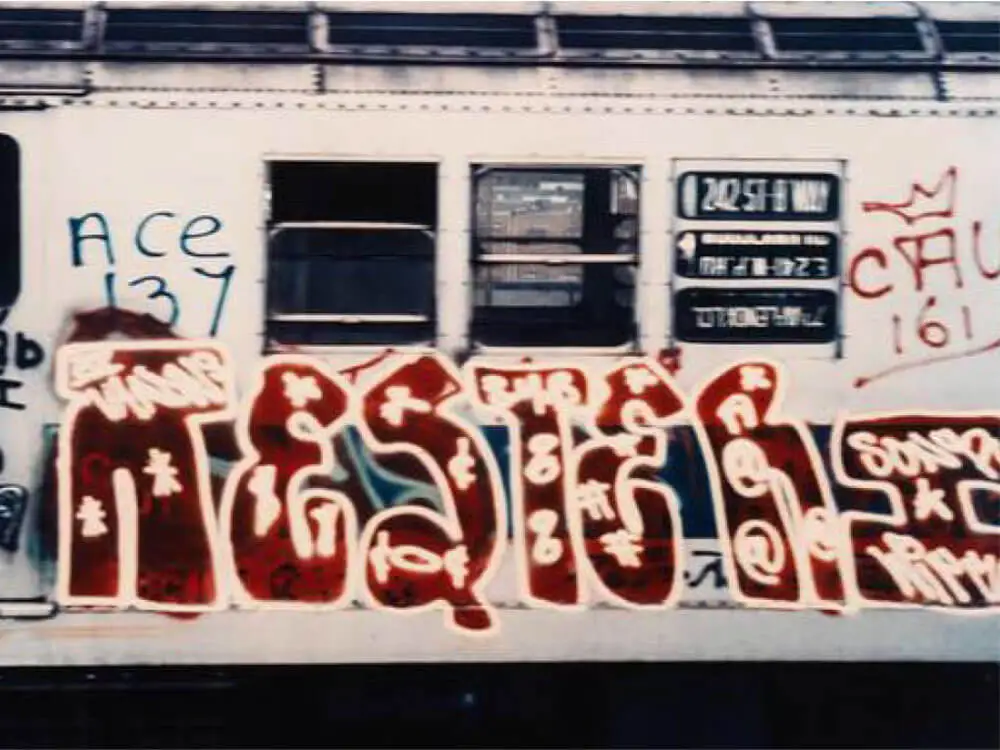Discover the captivating world of graffiti art, from its humble beginnings as a form of urban expression to its current status as a globally recognized art form. In this ultimate guide, we’ll explore the rich history, diverse styles, influential artists, and lasting impact of graffiti on contemporary art and society.
Table of Contents
Introduction
Graffiti, once considered a mere act of vandalism, has evolved into a globally recognized art form that has left an indelible mark on urban culture. From the streets of New York City to the alleyways of London, graffiti has become a powerful medium for self-expression, social commentary, and artistic innovation. In this comprehensive guide, we’ll explore the fascinating world of graffiti, delving into its rich history, diverse styles, influential artists, and lasting impact on contemporary art and society.
Key Takeaways
- Graffiti originated in the late 1960s in Philadelphia and New York City as a form of urban expression and territorial marking.
- Graffiti encompasses various styles, including tagging, throw-ups, pieces, characters, stencils, and wheat pasting.
- Influential graffiti artists like Jean-Michel Basquiat, Banksy, Keith Haring, Lady Pink, and Shepard Fairey have significantly impacted contemporary art and popular culture.
- Graffiti has served as a tool for social and political commentary, challenging dominant power structures and giving voice to underrepresented communities.
- In recent years, graffiti has gained recognition and legitimacy within the mainstream art world, with many artists transitioning into successful careers as fine artists, muralists, and designers.
The Origins and History of Graffiti
The roots of graffiti can be traced back to the late 1960s in Philadelphia and New York City, where young people began writing their names or « tags » on walls and subway trains as a way to claim territory and gain recognition. As the movement spread, graffiti evolved from simple tags to more elaborate pieces, with artists incorporating vibrant colors, intricate designs, and stylized lettering.
In the 1970s and 80s, graffiti exploded onto the scene as a major cultural force, particularly in New York City. Artists like Taki 183, Phase 2, and Lady Pink gained notoriety for their daring and visually striking works, which often covered entire subway cars. Despite being criminalized and heavily policed, graffiti continued to thrive, with artists finding new ways to innovate and push the boundaries of the medium.

Early graffiti on New York City subway cars in the 1970s
10 Stunning Styles and Techniques of Graffiti You Should Know
One of the most remarkable aspects of graffiti is its diversity of styles and techniques. From the bold, blocky letters of « throw-ups » to the intricate, interwoven designs of « wildstyle, » graffiti artists have developed a wide range of visual languages to express their creativity and individuality.
Some of the most common styles of graffiti include:
- Tagging: The simplest and most basic form of graffiti, consisting of the artist’s signature or alias written in a stylized manner.
- Throw-ups: A more elaborate version of tagging, featuring bubble-like letters filled with color and outlined in a contrasting shade.
- Pieces: Short for « masterpieces, » these are large, complex works that often incorporate multiple colors, 3D effects, and intricate details.
- Characters: Graffiti artists often incorporate figurative elements into their pieces, such as cartoon characters, portraits, or abstract shapes.
- Stencils: Some artists use pre-cut stencils to create repeated motifs or images, allowing for quick and precise application.
- Wheat pasting: A technique involving the application of pre-made posters or artwork onto surfaces using wheat paste as an adhesive.
- Wildstyle: A complex and highly stylized form of graffiti featuring interwoven, often illegible letters and shapes.
- 3D: Graffiti that incorporates three-dimensional effects, such as shading and perspective, to create the illusion of depth.
- Stickers: Some artists create custom stickers featuring their designs or tags, which can be quickly and easily applied to various surfaces.
- Murals: Large-scale, often commissioned or legally sanctioned works that cover entire walls or buildings.
These styles are achieved through a combination of spray paint, markers, and other tools, with artists often working quickly and surreptitiously to avoid detection by authorities.

Examples of various graffiti styles, including tagging, throw-ups, pieces, and murals
5 Influential Graffiti Artists Who Changed the Game
Throughout its history, graffiti has been shaped by a number of influential artists who have pushed the boundaries of the medium and left a lasting impact on the art world. Some of the most notable figures include:
- Jean-Michel Basquiat: A pioneering artist who began his career as a graffiti writer under the pseudonym « SAMO, » Basquiat went on to achieve international acclaim for his raw, expressive paintings that blended elements of graffiti, neo-expressionism, and primitive art.
- Banksy: An anonymous British artist known for his subversive, politically charged stencils and installations, Banksy has become one of the most famous and controversial figures in contemporary art.
- Keith Haring: Inspired by the energy and spontaneity of graffiti, Haring developed a distinctive style of bold, graphic figures and patterns that he applied to a wide range of media, from murals to merchandise.
- Lady Pink: One of the first women to gain recognition in the male-dominated world of graffiti, Lady Pink’s colorful, socially conscious pieces have been exhibited in galleries and museums around the world.
- Shepard Fairey: Best known for his iconic « OBEY » and « HOPE » posters, Fairey’s work blends graffiti, graphic design, and political activism to create powerful, thought-provoking images.
These artists, along with countless others, have helped to legitimize graffiti as a valid and important form of artistic expression, paving the way for its acceptance and appreciation by the mainstream art world.
The Powerful Impact and Legacy of Graffiti Art
Graffiti has had a profound and far-reaching impact on contemporary art and popular culture. Its influence can be seen in everything from fashion and advertising to music and film, with graffiti-inspired aesthetics and motifs being widely incorporated into mainstream design and media.
Moreover, graffiti has served as an important tool for social and political commentary, with artists using their work to address issues of inequality, injustice, and marginalization. By reclaiming public space and asserting their presence in the urban landscape, graffiti artists have challenged dominant power structures and given voice to underrepresented communities.
In recent years, graffiti has also gained increasing recognition and legitimacy within the art world, with major museums and galleries hosting exhibitions dedicated to the medium. Many graffiti artists have transitioned into successful careers as fine artists, muralists, and designers, blurring the lines between « street art » and « high art. »
To learn more about the impact and legacy of graffiti art, check out these resources:
- The History of American Graffiti
- The Rise of Graffiti Art, from Subway Car to Gallery
- Graffiti and Street Art
Frequently Asked Questions (FAQ)
Is graffiti legal?
In most cases, graffiti is considered illegal when created on public or private property without permission. However, some cities have designated areas where graffiti is allowed, and property owners may commission artists to create murals on their buildings.
What is the difference between graffiti and street art?
While graffiti and street art are often used interchangeably, graffiti typically refers to unsanctioned, often illegal, writing or drawing on public surfaces, while street art encompasses a broader range of mediums and techniques, such as stencils, wheatpasting, and installations, and is more likely to be commissioned or created with permission.
How can I learn to create graffiti?
To learn graffiti, start by studying the work of established artists, practicing your lettering and drawing skills, and experimenting with different styles and techniques. Many cities also have graffiti workshops or classes where you can learn from experienced artists. Remember to always practice legally and responsibly.
Conclusion
From its humble beginnings as a form of urban rebellion to its current status as a globally recognized art form, graffiti has undergone a remarkable evolution over the past half-century. Through their creativity, skill, and daring, graffiti artists have transformed the way we see and experience public space, leaving an indelible mark on the cultural landscape.
As we continue to grapple with issues of identity, inequality, and social change, graffiti remains a vital and relevant means of expression, offering a powerful platform for artists to share their perspectives and challenge the status quo. By embracing and celebrating this unique and dynamic art form, we can help to ensure that its legacy endures for generations to come.
